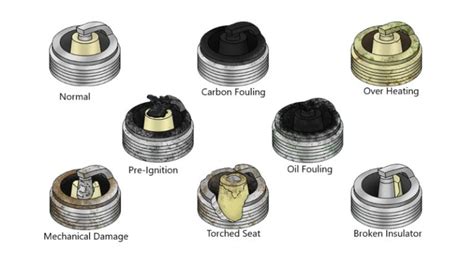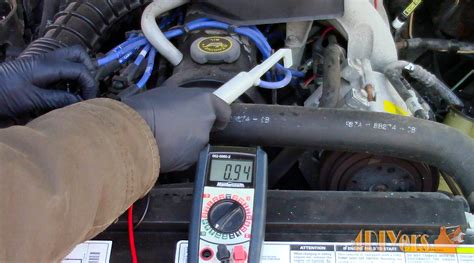Apache Spark is an open-source, unified analytics engine for large-scale data processing. It provides high-level APIs in Java, Python, Scala, and R, as well as a highly optimized engine that supports general execution graphs. Checking the Spark application's performance and configuration is crucial for efficient data processing. In this article, we will discuss five ways to check Spark, including monitoring the Spark UI, checking the Spark configuration, using the Spark shell, monitoring the Spark logs, and using Spark metrics.
Key Points
- Monitoring the Spark UI provides a visual representation of the Spark application's performance and configuration.
- Checking the Spark configuration ensures that the application is set up correctly and optimized for performance.
- Using the Spark shell allows developers to interactively test and debug Spark applications.
- Monitoring the Spark logs provides detailed information about the application's performance and helps identify errors.
- Using Spark metrics provides a programmatic way to monitor and analyze the Spark application's performance.
Monitoring the Spark UI

The Spark UI is a web-based interface that provides a visual representation of the Spark application’s performance and configuration. It can be accessed by navigating to http://localhost:4040 in a web browser. The Spark UI provides detailed information about the application’s jobs, stages, and tasks, as well as the execution time and memory usage. It also provides a list of completed and running jobs, as well as a detailed view of each job’s execution plan.
Understanding the Spark UI
The Spark UI is divided into several sections, including the Jobs tab, the Stages tab, and the Storage tab. The Jobs tab provides a list of completed and running jobs, as well as detailed information about each job’s execution plan. The Stages tab provides detailed information about each stage of the job, including the input and output data, as well as the execution time and memory usage. The Storage tab provides information about the data stored in memory and on disk.
| Section | Description |
|---|---|
| Jobs | Provides a list of completed and running jobs |
| Stages | Provides detailed information about each stage of the job |
| Storage | Provides information about the data stored in memory and on disk |

Checking the Spark Configuration

Checking the Spark configuration ensures that the application is set up correctly and optimized for performance. The Spark configuration can be checked using the spark-submit command with the –help option. This will display a list of available configuration options, as well as their default values. The Spark configuration can also be checked using the Spark UI, which provides a detailed view of the application’s configuration.
Understanding Spark Configuration Options
Spark provides a wide range of configuration options that can be used to customize the application’s behavior. These options include spark.executor.memory, which sets the amount of memory allocated to each executor, and spark.driver.memory, which sets the amount of memory allocated to the driver. Other options include spark.executor.cores, which sets the number of cores allocated to each executor, and spark.default.parallelism, which sets the default level of parallelism for the application.
Using the Spark Shell
The Spark shell is an interactive shell that allows developers to test and debug Spark applications. It can be started using the spark-shell command, and it provides a range of features, including auto-completion, syntax highlighting, and a built-in help system. The Spark shell can be used to test Spark applications, as well as to explore and analyze data.
Using the Spark Shell for Development
The Spark shell is a powerful tool for developing and testing Spark applications. It provides a range of features that make it easy to write, test, and debug Spark code, including auto-completion, syntax highlighting, and a built-in help system. The Spark shell can also be used to explore and analyze data, making it an essential tool for data scientists and analysts.
Monitoring the Spark Logs
Monitoring the Spark logs provides detailed information about the application’s performance and helps identify errors. The Spark logs can be viewed using the spark logs command, and they provide a range of information, including the application’s configuration, the execution plan, and any errors that occur. The Spark logs can also be used to monitor the application’s performance and identify areas for optimization.
Understanding Spark Log Levels
Spark provides a range of log levels that can be used to control the amount of information that is logged. These levels include ERROR, WARN, INFO, DEBUG, and TRACE. The ERROR level logs only errors, while the TRACE level logs detailed information about the application’s execution. By adjusting the log level, developers can control the amount of information that is logged and identify areas for optimization.
Using Spark Metrics

Spark metrics provide a programmatic way to monitor and analyze the Spark application’s performance. They can be used to track a range of metrics, including the application’s execution time, memory usage, and disk usage. Spark metrics can be accessed using the spark.metrics package, and they provide a range of features, including support for multiple metrics systems and customizable metrics.
Understanding Spark Metrics
Spark metrics provide a range of information about the application’s performance, including the execution time, memory usage, and disk usage. They can be used to track the application’s performance over time and identify areas for optimization. Spark metrics can also be used to monitor the application’s configuration and identify any errors that occur.
What is the Spark UI?
+The Spark UI is a web-based interface that provides a visual representation of the Spark application’s performance and configuration.
How do I check the Spark configuration?
+The Spark configuration can be checked using the spark-submit command with the –help option, or by using the Spark UI.
What is the Spark shell?
+The Spark shell is an interactive shell that allows developers to test and debug Spark applications.
How do I monitor the Spark logs?
+The Spark logs can be viewed using the spark logs command, and they provide a range of information about the application’s performance and configuration.
What are Spark metrics?
+Spark metrics provide a programmatic way to monitor and analyze the Spark application’s performance, and they can be used to track a range of metrics, including execution time, memory usage, and disk usage.
